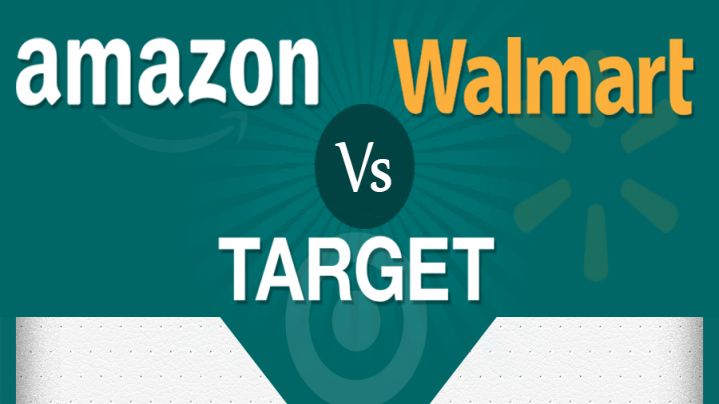
CoolDailyInfoGraphics.com
Is is possible that Target (TGT 1.27%) will deliver more profitable growth than Wal-Mart Stores (WMT 0.22%) and Amazon.com (AMZN 3.23%) in the future? This might sound like a crazy question, but since margin and bottom-line growth are the real keys to long-term success and shareholder wealth, this possibility must be investigated.
Recent results and what they really mean
Target's first quarter traffic and sales improved over the fourth quarter when the data breach occurred. In the fourth quarter, U.S. comps sales (sales at stores open at least one year) declined 2.5%. In the first quarter, U.S. comps sales slipped just 0.3%. This isn't a positive number, but it was on the high end of guidance: flat to down 2%.
Since Wall Street cares more about direction than anything else, this is seen by many as a win. You have to ask yourself why that comps number improved so much and came in on the high end of guidance, though. The answer? Promotions.
Promotions equal contracting margins and reduced profits. First-quarter EBITDA (earnings before interest, taxes, depreciation, and amortization) came in at 9.5%, down almost one percentage point from the year-ago quarter.
Target had no choice but to increase promotions in order to get its customers back into its stores. This was good news for traffic and sales, but bad news for margins. It's the future that matters though.
Looking backward and forward
What you're about to read is something most investors don't realize about Wal-Mart and Amazon. Amazon is the no. 1 online retailer in the world by sales and traffic, and its revenue growth has outpaced Target's and Wal-Mart's by heaps over the past five years:
You probably already had an idea about this trend. What you might not know, however, is that over the past three years, the stock appreciations for these three companies have been as follows: Wal-Mart (55.22%), Target (35.06%), Amazon (61.38%).
Notice that Wal-Mart's stock has appreciated almost as much as Amazon's over a three-year time frame. How can that be? Savvy investors love consistently profitable companies. Look at the EBITDA margins below and notice that only one of these three companies has delivered consistently:
Target has suffered from its Canadian operations, the data breach, and a hesitant consumer. It has many promotional and digital initiatives to help restart the engine, but success would take a long lime to come by given the fact that promotional sales don't help margins.
Amazon recently increased its annual Amazon Prime membership fee to $99 from $79. If it can maintain its top-line growth while improving its margins, then you have a home run. However, this has yet to be determined.
Wal-Mart is the only company of the three that has managed to deliver consistency on the top line and with its EBITDA margin over the years. This is despite reduced government benefits for the low-income consumer and thanks to good upper management that knows how to cut excess costs and maximize potential.
Add the fact that Wal-Mart currently offers a dividend yield of 2.5% and the Wal-Mart vs. Amazon investment debate becomes a lot more difficult than you might have imagined earlier. Target currently yields 3.6%, which is generous, but Target's margins are declining.
Now let's look ahead. Consider EBITDA margin estimates for the current and next two fiscal years for these three large retailers:
WMT EBITDA Margin Estimates for Current and Next 2 Fiscal Years data by YCharts
At first glance, Target might look the most appealing. Look closer, though, and you will notice that's actually a contraction while Wal-Mart and Amazon will be expanding their margins. However, looking two years ahead for any metric is like guesswork. You're actually better off basing your investment decisions on past (and consistent) trends, which could be an indication of management capabilities.
The Foolish conclusion
Target might be showing traffic and sales improvements, but they come at a steep price. Keep Target on your radar and consider getting on board if it begins to show margin improvements. Until then, Wal-Mart and Amazon should continue to offer better investment options -- Wal-Mart for the slow-and-steady investor, and Amazon for the risk-taker.


